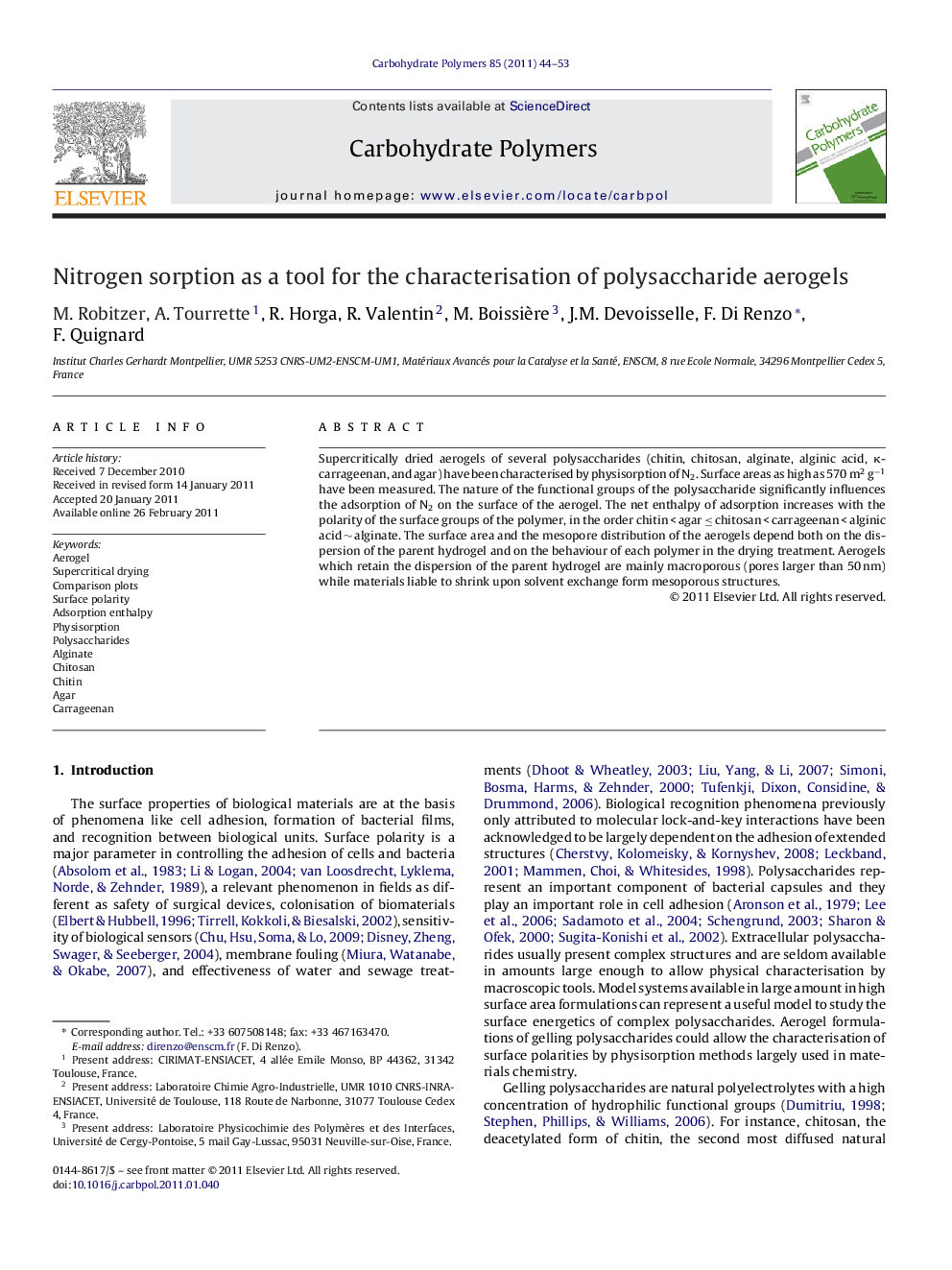| Article ID | Journal | Published Year | Pages | File Type |
|---|---|---|---|---|
| 1384167 | Carbohydrate Polymers | 2011 | 10 Pages |
Supercritically dried aerogels of several polysaccharides (chitin, chitosan, alginate, alginic acid, κ-carrageenan, and agar) have been characterised by physisorption of N2. Surface areas as high as 570 m2 g−1 have been measured. The nature of the functional groups of the polysaccharide significantly influences the adsorption of N2 on the surface of the aerogel. The net enthalpy of adsorption increases with the polarity of the surface groups of the polymer, in the order chitin < agar ≤ chitosan < carrageenan < alginic acid ∼ alginate. The surface area and the mesopore distribution of the aerogels depend both on the dispersion of the parent hydrogel and on the behaviour of each polymer in the drying treatment. Aerogels which retain the dispersion of the parent hydrogel are mainly macroporous (pores larger than 50 nm) while materials liable to shrink upon solvent exchange form mesoporous structures.
